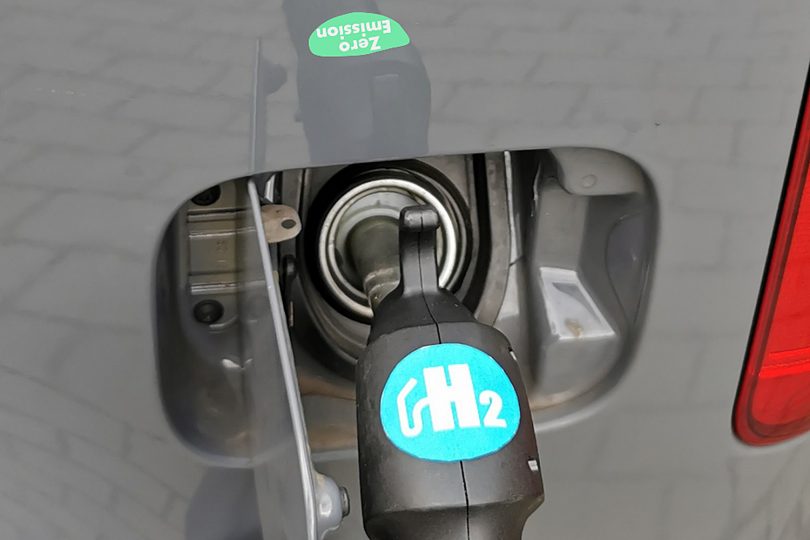Picture of the month: Trace analysis for hydrogen and battery research Laser beams for ceramic solid-state batteries
The conversion of excess green energy into hydrogen is a key component of the energy transition. The electrocatalysts used in the electrolysis of water in the so-called polymer electrolyte membrane cell must show high activity and stability during operation over a very long period of more than 10 years. The dissolution of the electrocatalysts over this period is a challenge. However, as the materials used today are already very stable, analytical methods with a very low detection limit are required to detect the dissolution of the materials in water. This is achieved by using an ICP-MS, a state-of-the-art analytical instrument shown in this month’s picture, for elemental trace analysis of liquid samples.

The argon plasma of an inductively coupled plasma mass spectrometer (ICP-MS) can reach temperatures up to 10,000 Kelvin. Image credit: Felix Kerner/Institute of Energy and Process Systems Engineering
Trace analysis plays a crucial role not only in hydrogen research, but also in the development of battery technologies. Batteries are complex systems in which impurities or unwanted elements can affect performance and lifetime. One example is lithium-ion batteries, which are used in a wide range of applications from electric vehicles to portable electronic devices. Even the smallest impurities can reduce their performance or even pose a safety risk. As a result, battery grade materials are generally required.
A state-of-the-art analytical tool
The picture of the month shows the argon plasma of an inductively coupled plasma mass spectrometer (ICP-MS) at temperatures up to 10,000 Kelvin. The liquid, usually aqueous, samples from electrolysis and battery research are converted into a very fine aerosol by a nebuliser. When this is passed through the plasma torch shown, almost all the elements it contains are ionised. These are then separated in the mass analyser and their intensity measured.
An ICP-MS is a state-of-the-art analytical instrument used for elemental trace analysis of liquid samples. It allows complex mixtures to be analysed in a very short time with extreme precision and extremely low detection limits (ng/L).
This makes it invaluable for hydrogen and battery research, allowing researchers to determine the composition and concentration of trace elements in their samples with high accuracy. This allows them not only to improve the performance and lifetime of hydrogen production catalysts, but also to optimise the quality and efficiency of battery materials by quantifying and eliminating impurities. Trace analysis thus makes a significant contribution to the development of sustainable energy technologies and future-proof battery systems.

